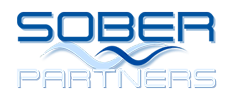Dual Diagnosis: Bipolar and Addiction

Bipolar & Addiction Treatment Program in California
Today, about 2.8%, or 9 million of the American population, battle bipolar disorder. Of this number, about 60% also suffer from substance abuse disorder. Bipolar disorder and addiction are both chronic conditions of the brain that affect how their patients feel, behave and act. The co-occurrence of the disorders can make their treatment and recovery more difficult.
Most times, people with bipolar and addiction require specialized medical care to treat their condition. Left untreated, bipolar disorder and substance abuse can impair their quality of life and significantly increase their risk for suicide.
Bipolar Disorder, Addiction, or Both?
Many bipolar patients are always tempted to abuse drugs and other substances to relieve the pain caused by their medical condition. The disorder may lead to substance addiction, financial and legal problems, relationship issues, and suicide.
Bipolar disorder symptoms also often resemble addiction and drug abuse signs. Someone experiencing a bipolar episode may act or look like someone on cocaine. A bipolar patient and an addict both experience elevated mood shifts and increased energy. Patients with major depression may also exhibit similar symptoms as addicts in withdrawal.
Therefore, patients with addiction who have co-occurring bipolar disorder must get immediate help from someone trained in dual diagnosis. That’s because the symptoms of the two disorders overlap. Often, the symptoms of one disorder may be misdiagnosed to be the other and vice versa.


The Connection Between Bipolar and Addiction
Generally, the link between bipolar disorder and addiction is very strong. However, many patients with bipolar disorder have higher addiction rates than patients with other mental health conditions. Almost 40% of bipolar patients also suffer from drug and alcohol abuse.
Scientists may not yet extensively understand the relationship between bipolar and addiction. However, the science shows there may be some connections between the two disorders.
These connections include:
1. Genetics
There may be genetic links between bipolar disorder and substance abuse because both occur in families. More studies continue making researchers believe bipolar and addiction may have genetic causes.
2. Differences in Brain Structure
Several studies show that the connection between brain abnormalities may be partially responsible for bipolar and addiction. The prefrontal cortex is vital for:
- Memory
- Attention
- Cognitive flexibility
- Impulse control
Similar studies suggest that areas in the prefrontal cortex that affect a bipolar patient overlap with those that may trigger addiction.
3. Self-Medication
Many people with bipolar disorder have also been recorded to use alcohol and other drugs to self-medicate. Bipolar patients can sometimes use cannabis to reduce their manic feelings or use cocaine to feel energized during their depressive periods. Over time, they may rely on these drugs to feel “normal” and keep their bipolar in check.
What Are the Warning Signs?
The condition of many patients with co-occurring bipolar and addiction can sometimes worsen both disorders. Therefore, it is easy for people with bipolar and substance abuse disorder to experience the following:
- Engage in reckless/dangerous behaviors
- Experience more dramatic mood shifts
- Be a higher risk for suicide
- Alternate mood states more rapidly
- Have emotional and violent outbursts
These signs may also result in more severe symptoms. Therefore, caregivers must know and understand these signs to properly care for patients with bipolar and drug abuse. Knowing these signs gives the caregiver an upper hand in providing the necessary remedies or treatments to calm the situation. This helps ease the patient’s suffering or drug cravings.


Bipolar and Addiction Treatment
Treating bipolar disorder can be complex, depending on the patient’s symptoms. That is why most treatments are individualized according to the patient’s condition, symptoms, preferences, needs, and treatment responses.
Treatment becomes more difficult when bipolar and addiction co-occur because of their overlapping nature within the patient’s brain. Therefore, both disorders must be treated at the same time and place. This is called integrated dual diagnosis treatment and involves treating the “whole person.”
Often, integrated treatment consists of one or more of the following features:
- Neurofeedback
- Motivational
- Interviewing
- Solution-Focused Therapy
- Counseling with board-certified, licensed therapists
- Medications, such as antidepressants and mood stabilizers
- Cognitive Behavioral Therapy
- Medication and Mindfulness instruction
- Trauma therapy
Often, treatment for bipolar disorder alone is insufficient without treating the addiction, and vice versa. The patient’s chances of relapsing will be much higher unless they undergo comprehensive treatment for both disorders simultaneously.
Medications for Bipolar and Addiction
Like many medical conditions, medication can help bipolar and addiction patients. Addiction treatment can stifle their cravings and ease their withdrawal symptoms. However, the prescribed addiction medication will depend on the drug or substance the patient abused.
Bipolar disorder medications can calm the patient’s mood shifts and bring some balance to their lives. Some common bipolar medications include:
- Antipsychotics
- Anticonvulsants
- Benzodiazepines
- Lithium
The Sober Partners Approach
Co-occurring bipolar disorder and addiction can be extremely serious. They can be put under control with the right treatment and medication. Many people with co-occurring bipolar and substance abuse disorder may act violently and engage in dangerous behaviors. These outbursts can severely disrupt their everyday lives.
However, integrated dual diagnosis treatment can help them overcome both disorders and receive the necessary help when they need it. Therefore, bipolar disorder and addiction patients must immediately seek guidance from a mental health professional to help with their current situation.
By comparison, diagnosing an addiction is much easier than diagnosing bipolar disorder. Many people who had bipolar episodes before their substance use are more likely to recognize their mental health issues.
But it can be harder to tell if the bipolar disorder resulted from the patient’s addiction. There may be more to the patient’s addiction than drug use. Contact us today to learn more about the proper treatment for bipolar and addiction.

